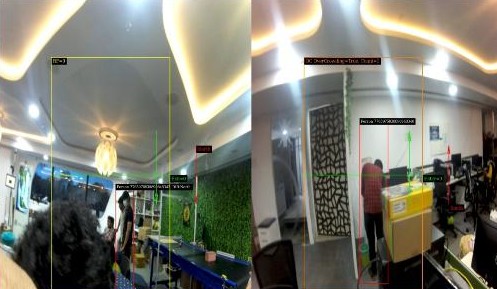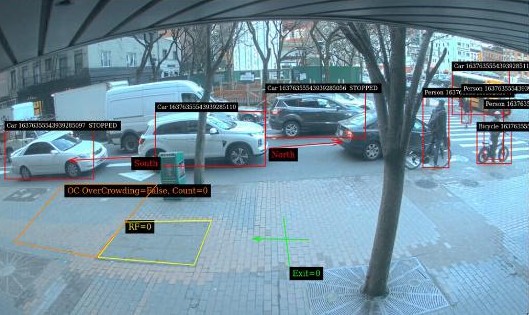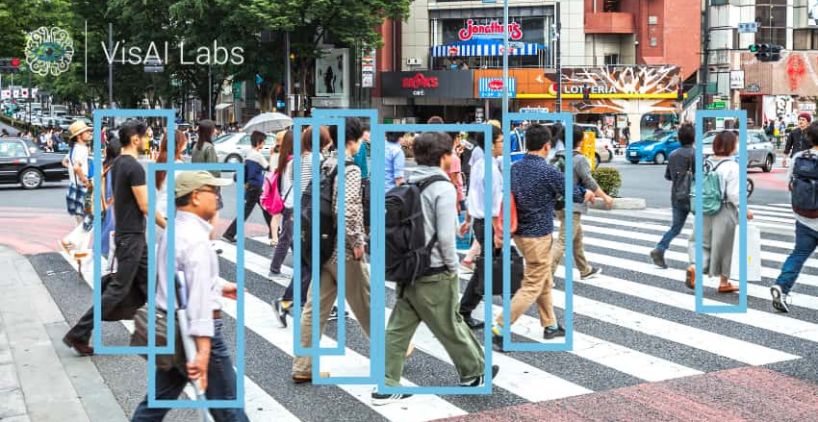Summary
Retail shops nowadays are focused on offering outstanding customer experiences, which necessitates understanding how customers spend their time in the store.
Today most retail owners have begun to deploy people counter-based technology like heatmaps to watch what you hit, miss, and where you often walk so that they can refine the store layouts like never before.
To enhance the heatmap functions, retail store owners now focus on integrating Nvidia DeepStream SDK within their people counting solutions to effectively track the movement and boost conversion rates, sales value, and profitability in their working environment.
This blog post explains how the Nvidia DeepStream SDK helps retail stores produce real-time consumer traffic using two robust features like ROI filtering and Overcrowding detection.
Written for:
- Project managers and engineers who are in the process of determining the best People Detection system for their particular product/use case.
- Automation managers who understand how computer vision-based people detection systems are revolutionising their core domain. And how these tools can help them perform their work more efficiently.
Introduction
Today many assume that brick and mortar retail stores would become obsolete as e-commerce stores and internet-based shopping grew prominently. They were mistaken. The main benefit that people choose physical retail over online shopping is increased visibility, higher sales opportunity, assisting customers in making decisions, and zero shipping costs. But this is not just one thing for the retailers. As the number of online shopping increase, the retailers are in a race to figure out new marketing strategies to attract and help customers stick with the brand. Here’s where the heatmap/ crowd counting tool comes into play.
Deploying a groundbreaking technology like heatmap-based people counting solution allows retailers to choose the right product mix, identify dead ends in the store to simplify processes, and rapidly increase customer experience and retail performance.
Role of the crowd counting/heatmap in the AI
Before delving into the role of the heatmap, we need to understand what the heatmap is?
Heatmap is a visualisation of data in the form of a map or diagram in which data values are expressed as colours. The heatmap technology enables retail store proprietors to see which items sell the best and supports analysing the store sections that draw the most buyers.
The heatmap can track and follow any shopper in the scene and generate reports of their behaviour like impression, passersby, and dwell time. The heatmap can also sense how many people went through a store, where they stood, and how long they stayed.
- Implementing heatmap in retail stores has many vital benefits, includes
- Can generate heatmap reports for the retailer to identify the best and worst-performing areas in the store
- Optimising store space effectively
- Can rapidly check if the store visuals and shelves attract attention and provide accurate and real-time data for retail optimisation tasks such as marketing, staffing, and pricing.
Utilising crowd counting\ heatmap for your retail business
Counting the people is not the only aim of crowd counters; the most significant fact is what you can do with the counting data. Excellent outcomes are dependent on high-quality software and hardware. In shopping, knowing how to count crowds is crucial for organising products in aisles, optimising shop layout, determining peak hours, and potentially preventing robbery.
This is where the Nvidia DeepStream SDK enters the picture. The Nvidia DeepStream analytics application provides a feature called Region of interest (ROI) filtering. It is the method of applying a filter to a region in an image that is defined by a binary mask. Also, it adds detection within the ROI as separate metadata. For example, persons inside the ROI are counted separately from the entire person count from a frame.
The Nvidia DeepStream SDK also have another feature called Overcrowding Detection. The function senses the presence of objects in the ROI and stores the information as metadata for each object and a total number of objects in the ROI per frame and overcrowding status. And this indicates that the number of objects in the ROI exceeds a pre-determined threshold.


The above images are great examples of ROI filtering and Overcrowding detection.
In addition, we can also predict other feature like age, gender, and height of the detected person using a custom detection or classification model (as a secondary detector) in the ROI. We can use the retail data as a business analysis tool.
With the relevant people tracking solution in your retail store, you can effectively keep track of all your retail key performance indicators (KPIs). No matter what the targets are, measuring conversion and footfalls is the first step in tracking these metrics.
Conclusion
The total number of customers who visit the store each day is one of the most important indicators for any retail industry. Prior to the development of more modern people counting technologies, the only way for business owners to keep track of who was going in and out was to make an employee guard the entrance. However, this method has a few drawbacks: manual counting consumes an employee’s time and resources, and people are prone to making mistakes.
VisAI Platform – Human/People Detection Solution
VisAI Labs has understood the critical need for Edge-optimised human/people detection algorithms that satisfy a varied range of use cases and pre-tested through diverse test scenarios to optimise the product/solution.
VisAI Labs human/People detection algorithms are constructed exclusively for People counting, Congestion detection, Intrusion detection, Social distancing checker, Dwell Time detection, and building monitoring.


